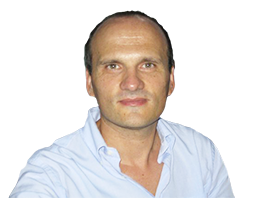In this and a couple more posts I’ll be writing in the next days, I’ll try to recollect thoughts and develop some of the issues I discussed last Saturday during the event organized by MIB at the Innovaction fair with Andrea Tracogna (MIB’s Deputy Dean), Andrea Notarnicola (from Newton Management Innovation) and Ivo Della Polla (Simulware). The subject of the panel discussion was Social Media and virtual worlds: the new "social dimension" for entrepreneurial education and communication and I tried to frame it within the way web 2.0 tools (and virtual worlds as well, as long as they are considered as a particular kind of social environment) pose a challenge to enterprises – but, at the same time, represent a great opportunity to tap into an immense pool of talent, creativity and ideas.
The first point I tried to challenge was a common interpretation of the well-known 90-9-1 rule (95-5-0.1 for blogs, 99.8-0.2-0.003 for Wikipedia), saying that an overwhelming majority of users are lurkers (i.e. read or observe and do not contribute) and can therefore be considered passive users. On the contrary, I believe that the change brought by web 2.0 does not belong exclusively in the "active" 90% or 95% who contributes to the discussion online: the shift has been achieved in a way that is well beyond the most dramatic cases such as citizens reporting during the 2004 tsunami, or the bombings in London. It is less about sending our contribution to the global discussion than being able to find a local biosphere in which our opinions, beliefs and values are adequately represented: the impressive variety of options we are able to choose from and the multitude of new ways to effectively leverage the knowledge we are able to reach and acquire, are making that 90% less passive than it has ever been and empowering its ability to expand the conversation in environments that are not visible from the web, but that are indirectly affected by its existence.
When I asked the audience about who had a blog, just four or five hands were raised. But the challenging questions asked at the end of the discussion and all the enthusiast people whom I met before leaving the room represent at my eyes the opposite of passive – the only difference is about the places where the discussion is taken.


